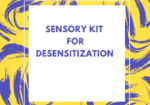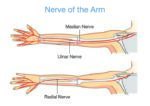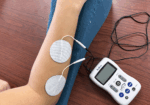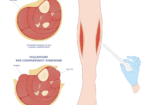Surgical vs. Conservative Treatment for Pediatric Trigger Finger
Filed under Uncategorized
Jia, L., King, J. D., Goubeaux, C., Belardo, Z. E., Little, K. J., Samora, J. B., Marks, J., &
Shah, A. S. (2023). Presentation and management of the pediatric trigger finger: A
multicenter retrospective cohort study. The Journal of Hand Surgery, 48(7), 665–672.
https://doi.org/10.1016/j.jhsa.2023.03.015
Article Review: Kelsy Melton

The Skinny: The goal of this study conducted by King et al., (2023) was to compare operative
and nonoperative treatment outcomes for pediatric trigger finger (PTF) based on presentation of the
condition. This is a rare and under-studied condition that can come from several anatomical
etiologies including the thickening of flexor digitorium profundus (FDP) and/or flexor digitorum superficialis (FDS), or an abnormal relationship between FDS or FDP, or constriction of the A1, A2 or A3 pulleys.
This was a retrospective cohort study conducted through the medical record review of three children’s
hospitals. The record review identified patient demographics, pediatric trigger finger characteristics, treatment strategies, and outcomes and ultimately included 321 patients 18 years and younger with a
combined total of 449 PTFs.
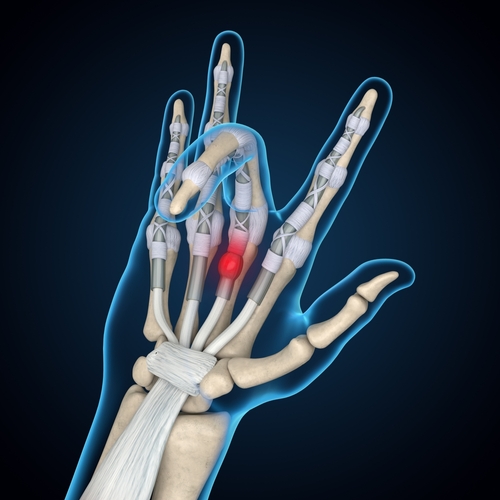
In the Weeds: Patients were excluded from the study if they had prior surgeries on the affected
digits or if they had a predisposing medical condition. Medical record reviews included patient
and pediatric trigger finger characteristics, nonsurgical treatment strategies, duration, and outcome, as well as operative treatment strategies, complications, and outcomes. Nonsurgical treatment strategies
included monitoring, stretching, nighttime extension splinting, nonsteroidal anti-inflammatory
drugs, and corticosteroid injections. Operative treatment included A1, 2 and/or 3 pulley release,
ulnar and radial FDS slip excision, and mass/tumor removal. A statistical analysis of the reviewed
data was utilized to determine a difference in the resolution of symptoms between splinted vs.
non-splinted pediatric trigger finger. A second analysis was completed to determine the difference between A1 pulley release alone versus A1 pulley release in combination with other procedures.
Bringing it Home: 80% of patients pursued non-surgical management of pediatric trigger finger initially, but after persistent worsening of symptoms 20% of those patients sought surgical intervention. The most common nonsurgical management was extension splinting and monitoring, resulting in 75% of
these pediatric trigger fingers achieved complete resolution of symptoms within 6 months., but high-grade pediatric trigger figners were significantly less likely to achieve this complete resolution with non-surgical management.
Overall, it was found that pediatric trigger fingers managed operatively had significantly higher rates of complete resolution compared with those managed conservatively. This confirmed the authors’ hypothesis that operatively managed pediatric trigger fingers have a significantly higher rate of symptom resolution than conservatively managed pediatric trigger fingers.
Rating: Overall, this study receives a 3 out of 5 rating. The large sample size and significant
findings of this study provide valuable insight into the treatment of a historically under-studied
condition. One of the biggest limitations of the study involves the potential for bias due to it
being a retrospective review. It is also possible that these findings are not generalizable to
patients with a predisposing medical condition, since these individuals were excluded from the
study.
More To Read
Sensory Kit for Hypersensitivity
Written by Melissa Miller Introduction After injury or surgery, nerves in the skin and surrounding the injured area can become overly sensitive. This can cause pain or an unpleasant sensation by stimuli that would not typically cause discomfort. For example, a light touch from a shirt or a certain material can feel like needles to…
Read MoreDifferentiating Proximal Median Nerve Entrapment from Carpal Tunnel Syndrome
By: Brittany Day Proximal Median Nerve Entrapment, Pronator Syndrome, or Lacertus Syndrome? Pronator syndrome is a term used to describe proximal median nerve entrapment (PMNE) in the forearm. Pronator syndrome and lacertus syndrome are sometimes used interchangeably to describe proximal median nerve entrapment distal to the ligament of Struthers and proximal to the flexor superficialis…
Read MoreRadial Nerve Palsy: A Paralysis Causing Wrist Drop
Radial Nerve Palsy- Treatment
Read MoreExertional (Chronic) Compartment Syndrome of The Hand
By: Tommi Long What is it? Chronic exertional compartment syndrome (CECS) is an exercise-induced condition affecting the muscles and nerves, leading to pain, swelling, and reduced muscle function due to increased pressure and restricted circulation. While most commonly, it impacts the arms and legs, it is rare to happen in the hand(s). CECS is most…
Read MoreSign-up to Get Updates Straight to Your Inbox!
Sign up with us and we will send you regular blog posts on everything hand therapy, notices every time we upload new videos and tutorials, along with handout, protocols, and other useful information.


